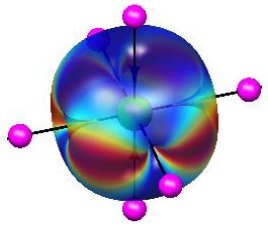Jaehong Jeong, Benjamin Lenz, Arsen Gukasov, Xavier Fabrèges, Andrew Sazonov, Vladimir Hutanu, Alex Louat, Dalila Bounoua, Cyril Martins, Silke Biermann, Véronique Brouet, Yvan Sidis, and Philippe Bourges, Phys. Rev. Lett. 125 (2020) 097202.
5d iridium oxides are of huge interest due to the potential for new quantum states driven by strong spin-orbit coupling. The strontium iridate Sr2IrO4 is particularly in the spotlight because of the so-called jeff = 1/2 state consisting of a quantum superposition of the three local t2g orbitals with, in its simplest version, nearly equal populations, which stabilizes an unconventional Mott insulating state.
Here, we report an anisotropic and aspherical magnetization density distribution measured by polarized neutron diffraction in a magnetic field up to 5 T at 4 K, which strongly deviates from a local jeff = 1/2 picture even when distortion-induced deviations from the equal weights of the orbital populations are taken into account. Once reconstructed by the maximum entropy method and multipole expansion model refinement, the magnetization density shows four cross-shaped positive lobes along the crystallographic tetragonal axes with a large spatial extent, showing that the xy orbital contribution is dominant. The analogy to the superconducting copper oxide systems might then be weaker than commonly thought.
https://doi.org/10.1103/PhysRevLett.125.097202.




